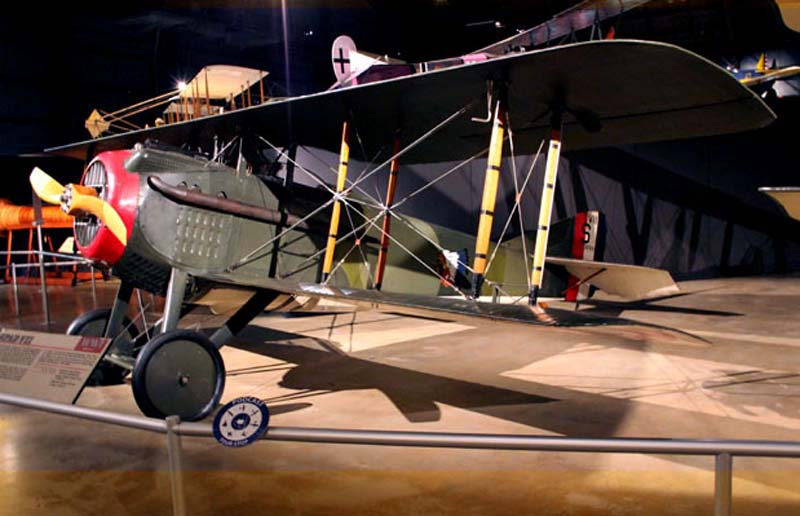| Spad | ||||||||||||
|
VII # |
||||||||||||
 |
||||||||||||
|
Photo:
Robert Deering 10/18/2012 National Museum of the USAF Wright-Patterson AFB (FFO) Dayton, Ohio |
||||||||||||
|
The famed American volunteers of
the French Lafayette Escadrille were flying the SPAD VII in
February 1918 at the time they transferred to the U.S. Army
Air Service, becoming the 103rd Aero Squadron. Several other
U.S. units also used the SPAD VII, although most American
Expeditionary Force (AEF) fighter squadrons were equipped
with a slightly improved version, the SPAD XIII, by the time
the war ended in November 1918. The SPAD VII made its initial flight in July 1916. It showed such promise that it was put into production at once, and by the latter part of that year it appeared on the Front in both French and British squadrons. The airplane was an immediate success, primarily because its structural ruggedness permitted it to dive at high speeds without disintegrating. About 189 of the slightly more than 5,000 SPAD VIIs built went to the AEF. The airplane on display was obtained from the Museum of Science and Industry, Chicago, Ill., and restored by the 1st Fighter Wing, Selfridge Air Force Base, Mich., 1962-1966. |
||||||||||||
|
||||||||||||
